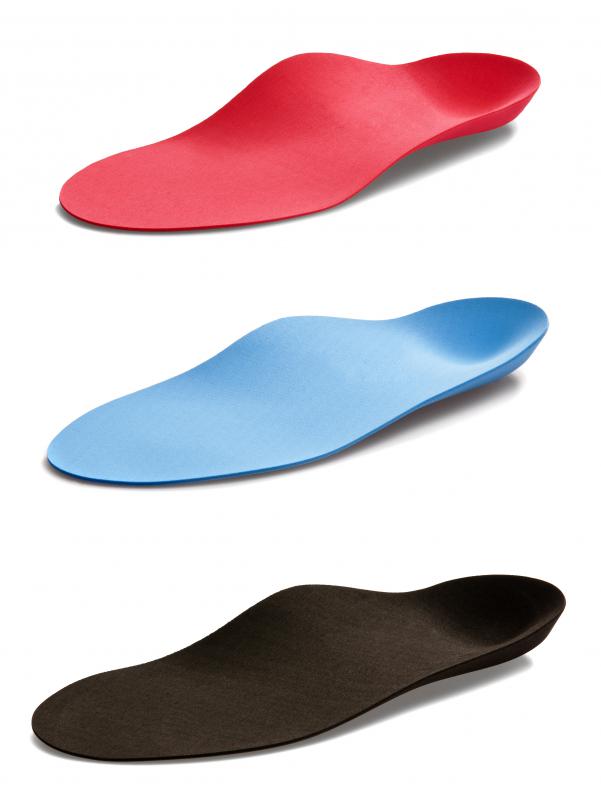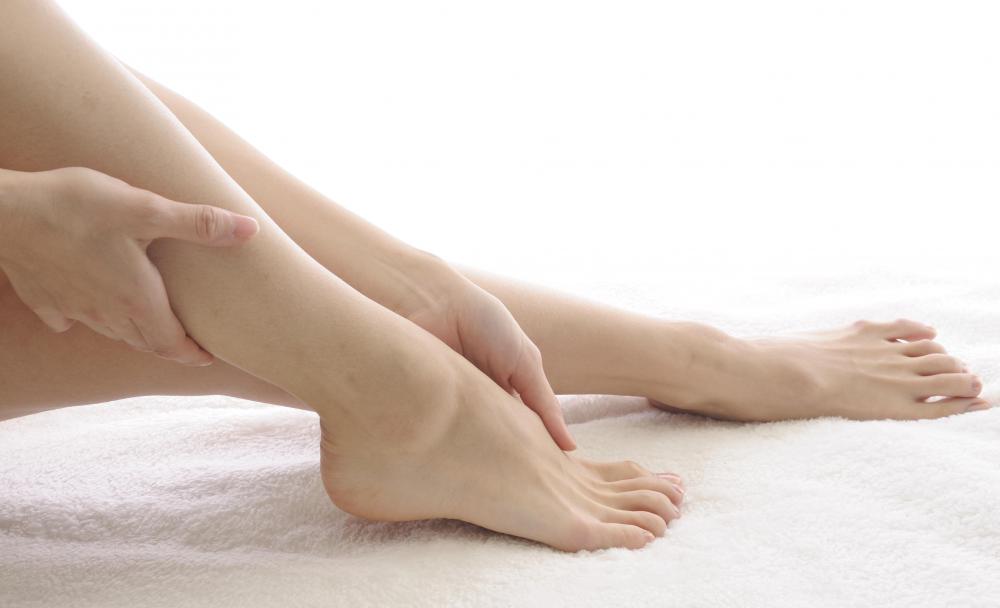At TheHealthBoard, we're committed to delivering accurate, trustworthy information. Our expert-authored content is rigorously fact-checked and sourced from credible authorities. Discover how we uphold the highest standards in providing you with reliable knowledge.
What is Pronation?
Pronation are the normal movements the foot makes to absorb the impact from walking or running. It occurs once the heel strikes the ground and the foot disperses the impact, stretching and flattening the arch as the foot rolls inward. Supination is the opposite motion of pronation. The foot supinates, or rolls on its outer edge, to help with stability as we walk or run.
A reasonable amount of pronation is necessary for the foot to function properly. However, when the foot arch remains flat and the foot rolls inward too much one may have excessive pronation or overpronation. This medical condition can result from continually straining the feet and wearing footwear that lacks sufficient foot arch support.

Excessive pronation causes the foot's arch to collapse which in turn causes the foot to twist outwards. A person with excessive pronation generally walks abnormally, on the inner edge of the foot. This stresses and misaligns the ligaments, muscles and tendons in the foot, leg and even the back. Eventually, this misalignment brings about muscular inefficiency, reducing speed and endurance while walking or running.

Undiagnosed and untreated, excessive pronation may lead to serious foot and lower body injuries. Among the most common injuries are flat feet, weak arches, bunions, corns, calluses, plantar Facsitus (heel pain), Achilles Tendinitis (tendon pain), frequent ankle sprains, shin splints and knee, hip and back pains.
There are two general methods for recognizing excessive pronation:
1. The Achilles Tendon Test:

Stand straight with your back facing the mirror, enabling you to look at your leg and foot from the back. On a normal foot, the Achilles Tendon runs straight down the leg into the heel. With excessive pronation, the tendon runs straight down the leg, but twists outwards as it arrives at the heel. Your inner ankle bone will jut out significantly compared to your outer ankle bone.
2. The Used Shoes Test:

Place a pair of your most used running shoes on the table, with its toes pointing away from you. Squat down to eye level. If your shoes tilt inwards, then your feet are excessively pronated. You can also take a look at the outer soles of your shoes. Extreme wear and tear along the balls of your feet shows pronation as well.
Once diagnosed, excessive pronation can be treated in several ways:
1. Orthotic Inserts:

Orthotic inserts are devices that are placed inside the shoes to provide added stability and arch support. They are available over-the-counter or can be custom-made to suit individual needs. Over-the-counter orthotic inserts help reduce minor arch discomfort. Custom-made orthotic inserts do more by controlling foot motion, redistributing weight evenly across the foot and accommodating any pain or impairment.
2. Proper footwear:
Good footwear with firm, multi-density mid-soles and straight or semi-curved lasts limit the occurrence of excessive pronation. In measuring the most suitable shoe size, length, width and depth of the foot should all be considered. Footwear with a firm heel and strong medial and arch support is highly recommended.
3. Exercise:
Regular stretching of the feet, ankles and legs ensures overall flexibility and suppleness. These exercises increase blood flow and reduce the extra stress and tightness brought on by excessive pronation.
While the above recommendations are generally useful, qualified podiatrists or orthopedic doctors may suggest surgical attention for cases of severe excessive pronation.
AS FEATURED ON:
AS FEATURED ON:















Discussion Comments
For years i had lower back pain. Then i developed "tennis elbow" in my big toe.
i was assessed by a podiatrist and he noted i had tight hamstrings and walked on my toes. I also pronated badly. He put me in a pair of Asic control shoes and made an insert. I wear them every day and have done so for 15 years now. no back pain.
I can now wear other shoes for a few hours but any longer and the pain comes back. The cost is high for the shoes but the pain relief is worth it.
I used to get a horrible sharp pain on the bottom of my foot, that seemed to move all over but especially bad in the morning or after running, a friend said it was due to over pronation and made me do some calf stretches, and gave me some Foot Science Insoles. I haven't thought about it since.
I have been trying to run for some time, but each time, I get chronic Tendon pain or shin pain, now I know why. I have just ordered some Saucony Grid Stabil CS in the hope that I will be able to run without pain. Looking at the previous comment, I am filled with hope.
I always thought that when people would try to send me expensive shoes for "pronators" that they were just trying to get my money. But I finally got a pair of those shoes and it turns out that it makes a huge difference. It actually helps me walk and run in a different way - I can feel the difference and it's much more comfortable.
Post your comments